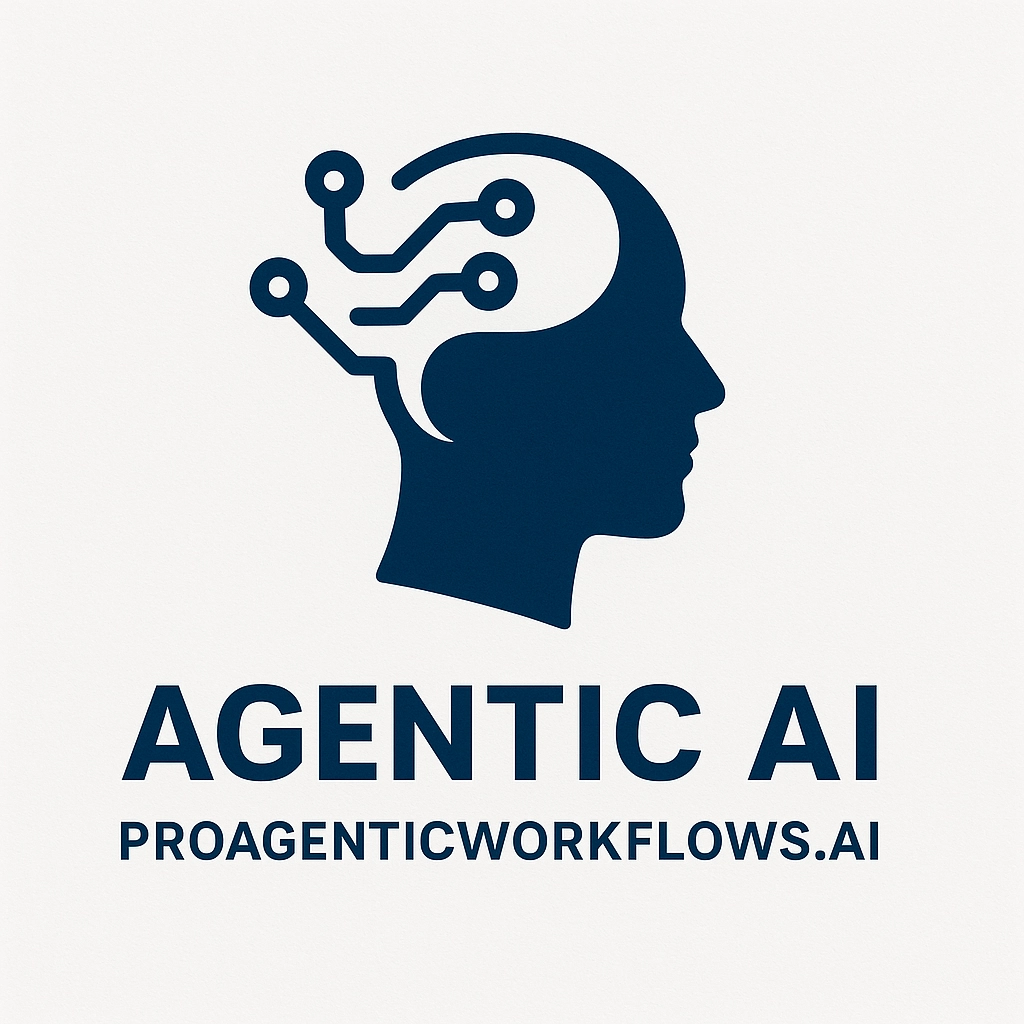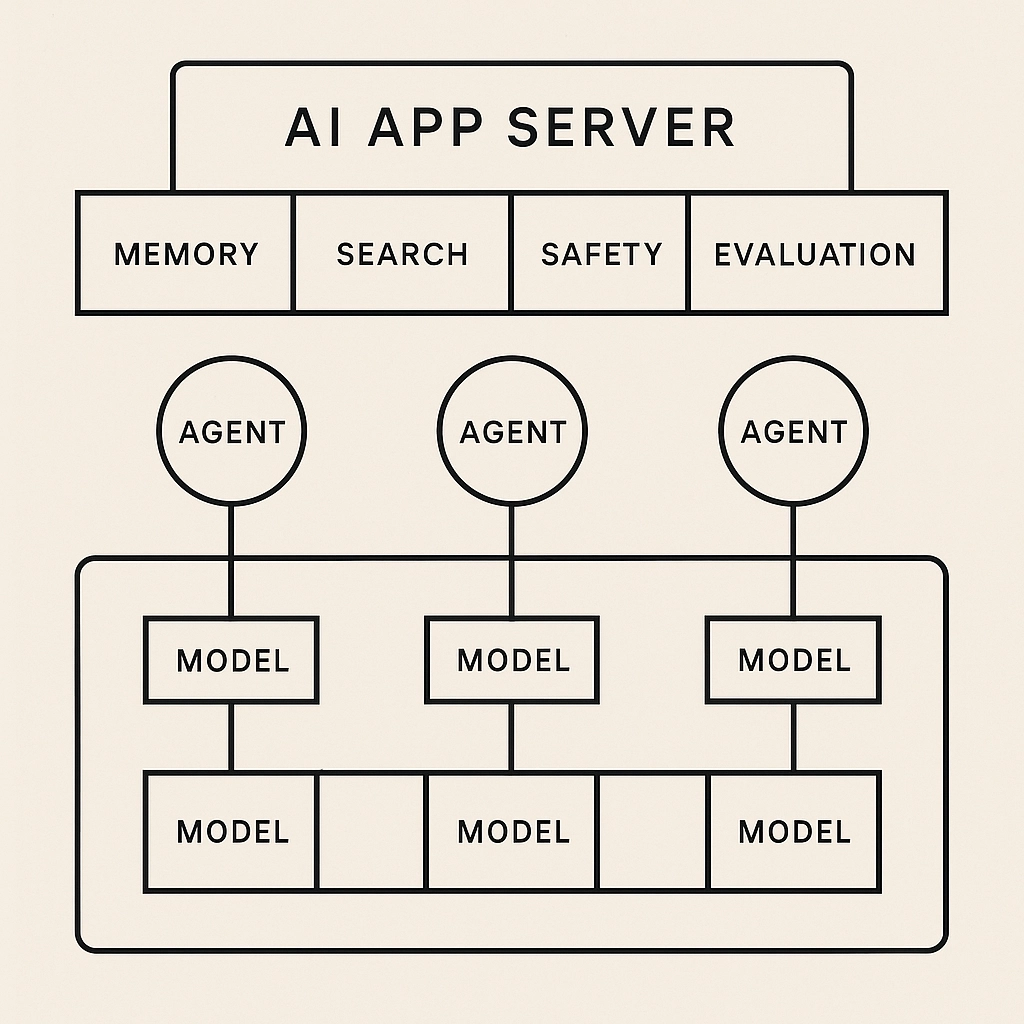Introduction
The evolution from monolithic LLMs to dynamic, multi-agent systems represents a paradigm shift in artificial intelligence. Modern Agentic AI Workflows leverage specialized modules, real-time tool integration, and advanced reasoning strategies to address complex, real-world tasks. This blueprint outlines a practical, step-by-step approach to constructing these workflows using state-of-the-art techniques and components.
1. Architectural Principles and Core Components
A. Modular Multi-Agent Design
Specialized Agents: Develop distinct agents tailored for specific functions:
Retrieval Agent: Integrates with vector databases (e.g., FAISS, Weaviate) and search engines for real-time, domain-specific information.
Reasoning Agent: Implements chain-of-thought (CoT) prompting, self-verification, and meta-reasoning strategies.
Planning & Execution Agent: Coordinates task decomposition and interacts with external APIs, calculators, or web services.
Dynamic Orchestration: A central orchestrator decomposes complex tasks into subtasks, delegates them, and reassembles the final output.
Communication Protocols: Utilize asynchronous messaging and API contracts (for instance, through LangChain modules) to ensure seamless inter-agent communication.
B. Hierarchical Task Decomposition
High-Level Decomposition: Break down complex problems into hierarchical subtasks, allowing agents to work at different abstraction levels.
Iterative Feedback Loops: Implement mechanisms for agents to refine their outputs iteratively, enhancing accuracy and coherence.
2. Advanced Reasoning and Memory Integration
A. Enhanced Chain-of-Thought (CoT) and Self-Verification
Step-by-Step Reasoning: Use advanced prompting techniques (including “ReAct” and “Self-Ask with Search”) to encourage models to explain their reasoning process.
Self-Verification Modules: Integrate checkpoints where agents evaluate and validate intermediate results to reduce hallucinations.
B. Meta-Reasoning and Context Management
Meta-Reasoning Layers: Develop modules that allow agents to evaluate and adjust their own reasoning pathways dynamically.
Dynamic Context Windows: Employ adjustable context lengths to maintain key information over long interactions without overwhelming the model’s capacity.
C. Episodic and Semantic Memory Systems
Long-Term Memory Integration: Use vector embeddings and memory networks to store and recall past interactions. This enables personalization and context retention.
Hybrid Memory Architectures: Combine episodic (recent events) and semantic (general knowledge) memory modules to provide a robust knowledge base.
3. Integrating External Tools and Real-Time Data
A. Retrieval-Augmented Generation (RAG)
Live Data Access: Fuse LLM outputs with real-time data from vector databases and external APIs. This approach enriches responses with the latest domain-specific information.
Knowledge Bases: Interface with large, curated knowledge sources to fill gaps in the AI agent’s internal database.
B. Multi-Modal and Tool Integration
API-Based Tool Use: Enable agents to call external tools—such as calculators, mapping services, or even image recognition APIs—to enhance task execution.
Multi-Modal Pipelines: Build workflows that process not only text but also vision, audio, and sensor data. This supports richer context and situational awareness.
Frameworks and Adapters: Use middleware (for example, adapter patterns in frameworks like LangChain) to standardize the interface between AI agents and external tools.
4. Efficiency and Scalability Beyond Compute Scaling
A. Efficient Inference Techniques
Mixture of Experts (MoE): Activate only the most relevant model components during inference to conserve resources.
Quantization and Distillation: Reduce model size and speed up inference with state-of-the-art compression techniques while maintaining accuracy.
Parameter-Efficient Fine-Tuning: Use methods like LoRA (Low-Rank Adaptation) to adapt large models to new tasks without extensive retraining.
B. Continuous Learning and Feedback
Reinforcement Learning from Human Feedback (RLHF): Implement RLHF pipelines to enable agents to learn from user interactions and iterative corrections.
Self-Supervised and Synthetic Data: Generate and incorporate synthetic data to pre-train agents, thereby broadening their capabilities and improving generalization.
5. Step-by-Step State-of-the-Art Implementation Roadmap
Step 1: Prototyping in Simulated Environments
Develop a Minimal Viable Workflow: Start with a core set of specialized agents handling a well-defined task (e.g., automated customer support or travel planning).
Use Simulation Frameworks: Test your architecture using controlled environments that simulate real-world conditions. Consider frameworks like OpenAI Gym or custom simulation platforms.
Step 2: Component-Based Testing and Integration
Individual Module Testing: Validate each agent (retrieval, reasoning, planning) independently using unit tests and performance benchmarks.
Inter-Agent Communication: Test the orchestration layer with asynchronous messaging protocols to ensure smooth delegation and result aggregation.
Incorporate Logging and Debugging: Implement comprehensive logging for every reasoning step and tool interaction to facilitate troubleshooting and optimization.
Step 3: Pilot Deployment and Benchmarking
Real-World Testing: Deploy the prototype on a small scale with real user interactions. Use feedback to identify performance bottlenecks and areas for improvement.
Benchmark Against Standards: Evaluate the system using benchmarks like BIG-Bench for reasoning quality and other domain-specific metrics.
Iterative Refinement: Based on pilot testing, iterate on the design by refining memory systems, adjusting context management, and fine-tuning agent orchestration.
Step 4: Scaling and Distributed Deployment
Distributed Orchestration: Scale the system using cloud-based orchestration frameworks (e.g., Kubernetes, Ray) to support multiple concurrent tasks.
Continuous Integration/Continuous Deployment (CI/CD): Integrate robust CI/CD pipelines to enable ongoing updates and improvements.
Monitoring and Analytics: Set up real-time monitoring dashboards to track performance, resource utilization, and user satisfaction metrics.
Step 5: Ethical Governance and Transparency
Auditable Decision Pathways: Implement logging mechanisms that capture the reasoning chain for each decision, ensuring transparency.
Bias Mitigation Protocols: Integrate regular audits and fairness checks into the deployment pipeline.
User-Centered Controls: Develop interfaces that allow users to review and adjust the decision-making process, ensuring that the system remains aligned with human values.
Conclusion
This state-of-the-art blueprint for Agentic AI Workflows provides a comprehensive guide to building next-generation AI agents. By integrating modular design, advanced reasoning, dynamic memory systems, external tool integration, and efficiency-driven scaling, developers can create systems that are not only intelligent but also adaptive, transparent, and ethically robust. As AI technology continues to advance, this framework can evolve to incorporate emerging methods—ensuring that our next-gen agents remain at the forefront of innovation.
This roadmap serves as a practical guide, blending modern research with actionable steps to empower developers in deploying AI systems that truly learn and evolve in real time.






Comments